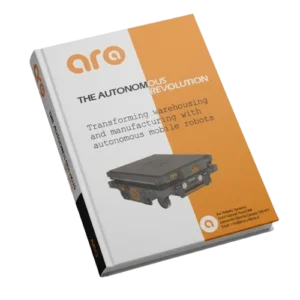What do you envision when you think about robots and the robotic world? Is it science fiction movies and books? Or maybe you do not think about it that often. To be fair, this might not be something on everyone’s mind, but it is an important topic we should be discussing and thinking about. The growth of technologies and robots is inevitable, and they have been affecting our lives in unprecedented ways whether it is consumer or industrial space. As robotic technology evolves, it is essential for us to understand what they are and how they function so that we can use this knowledge to maximize their usage. Robots are electromechanical machines that assist humans with different tasks. Intelligent machines that have the ability to gain information and perform labor work without human intervention and supervision are called autonomous robots. Some robots can perform these tasks on their own, while others are semi-autonomous and need external help from humans. All robots are made for the convenience of people, either that be robot vacuum cleaners or autonomous helicopters and R1, R2 space robots.
Autonomous robots are the future. They perform functions ranging from space exploration to household chores. As already mentioned before, an autonomous robot is an automatically functioning machine that can accomplish complex objectives on its own. This can be very useful as robots can be placed in dangerous/hazardous places to perform tasks where humans are restricted. Robots can provide high-quality finished products and do so reliably and repeatedly in any environment. Robots can be used in various fields, including medical, space, military applications, warehouses, households, laboratories, airports, agriculture, and so much more. With growing knowledge in technology and robotics, robots ‘development is advancing and is viewed to leave an immediate impact on the world. Robots are precise and accurate, there are fewer chances of human error, and can also help in saving time, money, and labour. There are various industries using robotics to improve their production.
A special category autonomous robots is autonomous mobile robot (AMRs). These have application in intralogistics where the materials and good needs to repetitively transported in an indoor/outdoor environment. Humans are not highly efficient in repetitive tasks but AMRs can get perfect when they repeat one task again and again. Such robots are helpful in busy environments such as hospitals, warehouses, distribution centers, airports, supermarkets and many other places where humans need to transport materials. Instead of employees having to walk around the building, a robot can deliver products. These robots can navigate hallways and even find alternate routes. An intelligent robot with sensors, cameras, a feedback control system and microphones can interact with patients and workers. With the increasing ageing population, a robot can also be used in long-term care. The robots can interact, supply necessities and medications, enhance the mobility of the elderly, and even facilitate the physical transfer.
With the increase of Covid 19, we have seen the importance of having a reliable labour source, and robots are reliable labour that can work 24/7. A robot can help maintain physical distance and help decline the spread of germs. Similarly, autonomous robots can be used in warehouses airports. Similar to the hospital scenario, the robots can deliver different tools at the warehouse. Without needing to go anywhere, the robot can navigate itself around and reach the destination to drop off supplies. Robots can be used in manufacturing, lifting heavy items, cleaning, safety, and so much more. At the airport, robots can handle baggage, cleaning, customer service and decrease repetitive, non-value-adding manual labour.
Image credits: Tiger Lily


